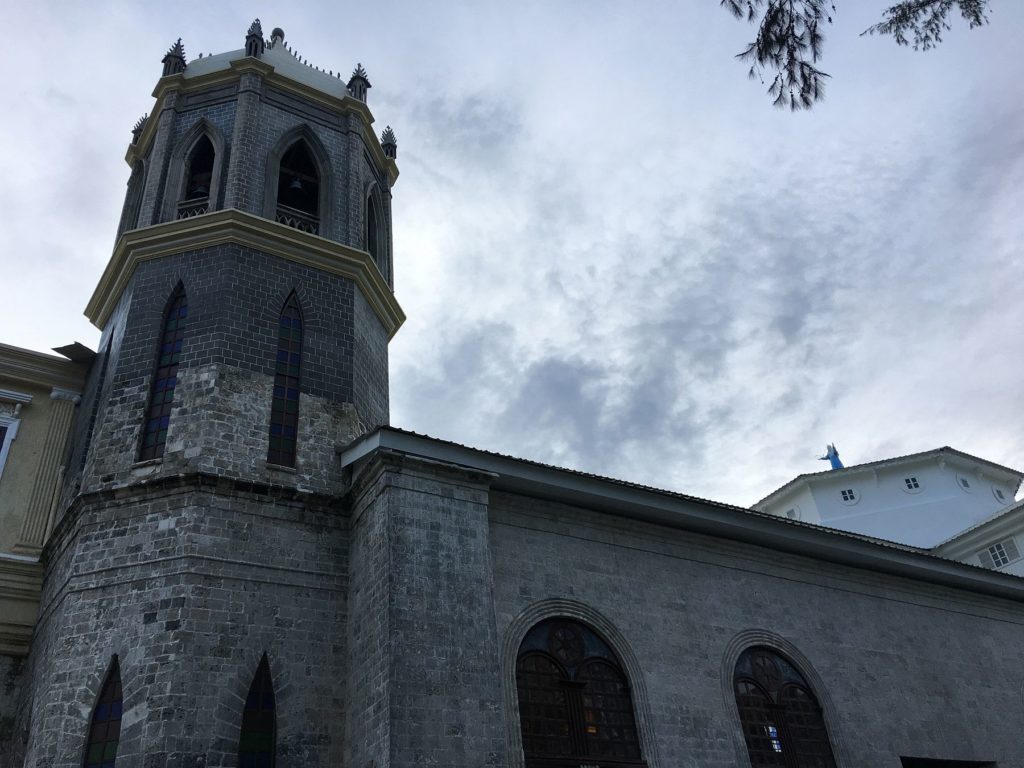
Four years since the magnitude 7.2 earthquake in Bohol, the Our Lady of Assumption Shrine in Dauis town has been restored to its former beauty and glory by the National Historical Commission of the Philippines. (CDN PHOTO)
BOHOL EARTHQUAKE 4TH ANNIVERSARY
History researcher and National Historical Commission of the Philippines (NHCP) architect in-charge for Bohol restoration projects Benjamin Concepcion Empleo told Cebu Daily News that most of their work over the last four years focused on drafting a restoration plan for heritage structures damaged by the 7.2-magnitude earthquake that hit the province on October 15, 2013.
Empleo said they also had to study the proper technology to use in rebuilding centuries-old churches.
The church in Dauis was the first to be restored completely in Bohol since NHCP’s team of heritage and construction experts were immediately able to find the right technique.
“The most important and the most difficult part is in coming up with the solution, on how we go about the restoration and coming up with the plan. But it is still considered fast compared to other international restoration projects,” Empleo said.
While restoration work done in other countries could last five to 10 years, the actual restoration work on Dauis town’s Our Lady of Assumption Shrine lasted for only two years from 2015 until 2017.
The NHCP also commissioned a team from the Association of Structural Engineers of the Philippines, led by seismic engineering specialist Carlos Villaraza, to undertake a study that would be the basis for a national structural code on traditional or unreinforced masonry.
The multi-million restoration work involved the stabilization and consolidation of brittle paintings, treatment of corroded hardware and the infilling of gaps in the paintings on ceilings and walls by using strips of paper to mask the gaps between the canvass and the wooden planks.
The same technique was also used in the actual restoration of the church which included the repair of stone walls, mechanical cleaning and vegetation removal; chemical treatment and biocide application; among others.
Structural support was reinforced by stabilizing the rubble core and clamping masonry walls.
Missing mouldings and ornaments were either restored or replaced while interior walls were plastered.
The church roof, portico, walls, columns and arches were fixed, doors and windows were retrofitted and electrical and plumbing works were done.
More churches next
Within the next few weeks, Empleo said the NHCP will turn over more fully restored churches in Bohol.
While the church in Dauis was turned over to the Diocese of Tagbilaran last August 14, on the eve of the town’s fiesta, yesterday, October 15, the fourth anniversary of the quake, NHCP turned over Loay town’s Holy Trinity Church.
“Loay is a bit special compared to the other churches because there are also three buildings there that are leased to NHCP for 25 years which we are also developing,” he said.
NHCP plans to convert the buildings into museums that would include a Bohol History Museum, a museum for the restoration efforts of the government after the Bohol earthquake, and a “conservation laboratory” for training and workshops.
In December, NHCP will turn over the iconic Immaculate Conception Church of Baclayon — considered one of the oldest churches in the Philippines.
Empleo hoped that repair work on two other churches, the St. Paul Church of Inabanga town and the St. Anthony the Abbot Church of Carmen town will be completed also by December.
“The hard work is already done. Now, we’re only on the finishing touches,” he added.
By May 2018, NHCP is scheduled to hold turn over ceremonies for Tubigon town’s San Isidro Labrador Church.
Other structures restored by the NHCP were turned over in 2016 including the Pamilacan watchtower in Baclayon town and the Rizal Monument and Plaza in Loon town.
Aside from NHCP, other heritage agencies like the National Commission for Culture and the Arts (NCCA) and the National Museum (NM), were also assigned different churches and heritage structures to study and restore.
Other churches like Nuestra Señora de la Luz Parish Church of Loon town and the Santa Cruz Parish Church in Maribojoc town, which were among those hardest hit by the earthquake and left in ruins, are under NCAA and NM.
The structures are protected under Republic Act 10066 or the Heritage Law as they have been declared as National Cultural Treasures, National Historical Landmarks, and Important Cultural Properties.
